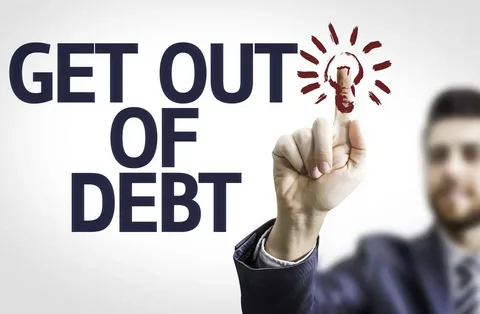Debt can feel like a heavy burden, but with determination and the right strategies, it’s possible to regain financial stability. If you’re wondering How to Get Out of Debt, this guide provides actionable steps to help you break free and achieve financial peace. Whether it’s credit card balances, loans, or unexpected expenses, these practical tips can help you manage and eliminate your debt effectively.
Understand Your Debt Situation
Before taking steps to address your debt, it’s essential to have a clear understanding of what you owe. List all your debts, including the creditor’s name, total amount owed, interest rate, and minimum monthly payments. This comprehensive overview helps you prioritize repayments and plan your strategy.
By knowing the exact details of your debt, you can create a realistic plan for how to get out of debt while ensuring that you don’t overlook any obligations.
Benefits of Being Debt-Free
Achieving financial freedom brings numerous advantages, such as:
- Improved Mental Well-Being: Eliminating debt reduces stress and anxiety, allowing you to focus on other aspects of life.
- Financial Flexibility: With no debt, you can save for important goals like retirement, homeownership, or travel.
- Greater Stability: Debt-free living provides security and peace of mind during unexpected life events.
These benefits serve as a reminder of why it’s worth the effort to learn How to Get Out of Debt and commit to the process.
Step 1: Create a Budget
Creating a budget is one of the most powerful tools to manage and reduce debt. A budget allows you to allocate your income effectively and ensure you’re spending within your means.
- Track Your Expenses: Start by monitoring your spending habits for a month to identify areas where you can cut back.
- Prioritize Essentials: Focus on necessities like housing, utilities, and groceries.
- Allocate Debt Repayment Funds: Set aside a specific amount each month to pay down your debts.
A well-structured budget ensures that you remain disciplined and focused on your financial goals.
Step 2: Choose a Debt Repayment Strategy
Deciding on a repayment strategy is key to eliminating debt. Two popular approaches are the Debt Snowball and Debt Avalanche methods.
- Debt Snowball: Pay off your smallest debts first while making minimum payments on others. This method builds momentum as you experience quick wins, which can motivate you to continue.
- Debt Avalanche: Focus on paying off debts with the highest interest rates first. While this method saves money in the long run, it may take longer to see progress.
Choose the strategy that aligns best with your financial goals and psychological preferences.
Step 3: Consolidate Your Debts
Debt consolidation can simplify repayments and lower your interest rates. By combining multiple debts into a single payment, you can manage your finances more efficiently.
Common debt consolidation options include:
- Personal Loans: Secure a loan to pay off higher-interest debts, then repay the loan in fixed monthly installments.
- Balance Transfer Credit Cards: Transfer high-interest credit card balances to a card with a lower or 0% introductory interest rate.
- Home Equity Loans: Use the equity in your home to secure a loan for debt repayment.
While debt consolidation can be a helpful solution for How to Get Out of Debt, it’s crucial to avoid accumulating new debt during the process.
Step 4: Negotiate with Creditors
Creditors may be willing to work with you if you communicate your financial struggles openly. Contact them to discuss options such as lower interest rates, reduced payments, or settlement offers.
Examples of what you can request:
- Lower Interest Rates: This can reduce the amount you pay over time and make monthly payments more manageable.
- Payment Plans: Negotiate a payment schedule that fits within your budget.
- Debt Settlement: In some cases, creditors may agree to accept a lump sum payment for less than the total amount owed.
Effective negotiation can provide relief and make your debt repayment journey smoother.
Step 5: Increase Your Income
If your current income isn’t sufficient to cover debt repayment, finding ways to earn extra money can accelerate the process.
- Freelance Work: Use your skills to offer services like writing, graphic design, or tutoring.
- Part-Time Jobs: Consider part-time roles in industries like retail, food delivery, or customer service.
- Sell Unused Items: Declutter your home and sell items you no longer need through online marketplaces.
Additional income streams can help you pay off debts faster and reduce financial strain.
Step 6: Build an Emergency Fund
While it may seem counterintuitive to save while paying off debt, having an emergency fund is crucial. Unexpected expenses like medical bills or car repairs can derail your progress if you don’t have a financial cushion.
Start small by setting aside a portion of your income each month. Even a modest emergency fund can prevent you from falling back into debt when faced with unexpected expenses.
Step 7: Avoid Accumulating New Debt
To successfully get out of debt, it’s essential to avoid accumulating more. Be mindful of your spending habits and make changes where necessary:
- Use Cash or Debit: Avoid using credit cards unless absolutely necessary.
- Delay Non-Essential Purchases: Focus on needs rather than wants until your debts are under control.
- Adopt a Minimalist Mindset: Simplify your lifestyle to prioritize debt repayment.
By controlling your spending, you can ensure that your efforts to reduce debt are not undone.
Step 8: Seek Professional Help
If managing debt feels overwhelming, professional assistance may provide the support you need. Consider reaching out to:
- Credit Counseling Services: Non Profit organizations that help you create a debt management plan.
- Debt Settlement Agencies: Companies that negotiate with creditors to settle debts for less than what you owe.
- Financial Advisors: Experts who can guide you on long-term financial planning and investment strategies.
Choose reputable professionals to avoid scams or untrustworthy practices.
Step 9: Stay Disciplined and Motivated
The journey to becoming debt-free requires consistency and commitment. Stay focused on your goals by:
- Tracking Progress: Monitor your repayments to see how far you’ve come.
- Celebrating Milestones: Acknowledge small victories, like paying off a specific debt, to stay motivated.
- Seeking Support: Share your goals with friends or family who can provide encouragement and accountability.
Staying disciplined ensures steady progress and helps you maintain a positive outlook throughout the process.
Conclusion
Understanding How to Get Out of Debt is the first step toward financial freedom. By creating a budget, choosing a repayment strategy, and staying disciplined, you can regain control over your finances. Whether you choose the Debt Snowball or Debt Avalanche method, increase your income, or negotiate with creditors, every action you take moves you closer to a debt-free life.
The journey may require sacrifices and consistent effort, but the peace of mind and financial stability that come with being debt-free make it all worthwhile. Start today and take the steps needed to secure a brighter financial future.





